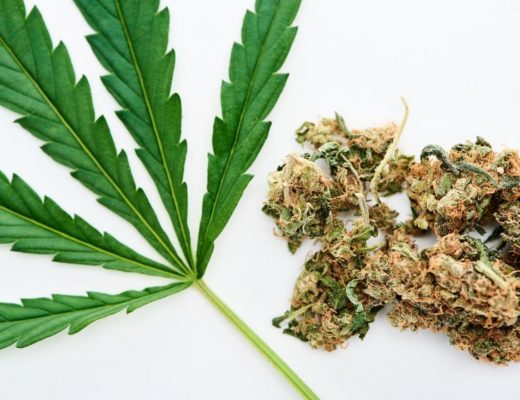We’ve all enjoyed the fruits, or buds, of the cannabis plant, but what exactly is the cannabis plant? Like all plants, cannabis is a complex organism that has a lot of different features.
That’s why we’re going to break down the cannabis plant and tell you everything you need to know without being a botanist. Continue reading below to find out what a cannabis plant is made of.
Anatomy of the Cannabis Plant
Every cannabis plant you see is made up of essential structures. These structures all play a role in helping the cannabis plant survive and thrive.
Roots
These are underground structures hidden in the soil or growing medium. The roots of the cannabis plant are white and branch out in search of water and nutrients.
Stem
The stem of the cannabis plant gives structure and stability to the other parts of the plant. The stem is the central column that rises from the soil up to the top of the plant.
Sometimes the stem gets cut to encourage the weed plant to grow out in a horizontal direction.
Branches
The branches of the cannabis plant are connected to the main stem and provide a structure for the leaves to perform photosynthesis. These branches can be found from the bottom of the stem up until the top.
Node and Internodes
The nodes are the spot where the branch and the main stem meet. The nodes are extremely important because this is the area where cannabis flowers form.
Flowers
You’re probably most familiar with the flowers (or buds) of the cannabis plant. However, these cannabinoid-packed structures are only found in the female cannabis plant.
Fan Leaves
Whenever you see any cannabis leaf symbols or art, typically, they’re showing the fan leaves. Fan leaves are the largest type of leaf that can be found on the cannabis plant.
The purpose of the fan leaf is to capture light and drive photosynthesis. On top of that, they help the cannabis plant breathe by uptaking CO2.
Sugar Leaves
Sugar leaves are the small leaves that grow out of mature flowers. The reason they’re called sugar leaves is that they’re usually packed with trichomes.
Like fan leaves, they help capture light and produce energy via photosynthesis.
Trichomes
Trichomes are tiny glands that cover the surface of the buds and some of the leaves of the cannabis plant. These mushroom-shaped glands are rich in cannabinoids, terpenes, and flavonoids.
The male cannabis plant also produces trichomes but not nearly as many as the female cannabis plant.
Sex of the Cannabis Plant
Although we’re obsessed with the flowers of the cannabis plant, they only come from females, as we mentioned above. In fact, it’s rare to see a male plant, and they’re usually only used for breeding or to produce hemp fiber.
Female
Female cannabis plants are the star of the show. When growing cannabis for THC- or CBD-rich flowers, only the female cannabis plants are used.
However, female cannabis flowers grow so large because they’re searching for pollen from the male cannabis plant. Remember, as a biological organism, the plant wants to get pollinated and produce seeds.
Male plants must be kept away from female plants because of pollination. Once the flowers get pollinated by the male’s pollen, the flowers will direct energy away from the buds and start growing seeds.
Male
As mentioned, male plants are rarely used by growers unless it’s for breeding purposes. That’s how breeders can breed new strains—by pollinating female plants with male plants.
Instead of flowers, male plants grow pollen sacs. Once these pollen sacs open, the pollen is carried by air or taken by insects.
Hermaphrodite
If a cannabis plant is under environmental stress or genetically unstable, it can turn into a hermaphrodite. Also known as a hermie, these plants have both female flowers and male pollen sacs.
Hermies can self-pollinate and will almost always result in seedy weed.
Types of Cannabis Plants
Besides gender, there are also different types of cannabis plants—based on how they grow. Whether these types of cannabis plants are separate species has been debated for hundreds of years.
However, it’s currently thought that there are two subtypes called indica or sativa.
Indica
Also known as Cannabis indica, these plants typically grow short, dense, and bulky. One key characteristic of indica plants is broad fan leaves.
It’s thought that indica plants originated in hot places and may produce a more even ratio of THC to CBD.
Sativa
Cannabis sativa grows almost the exact opposite of indica plants because they’re usually tall and thin. The fan leaves on sativa plants are much skinnier than their indica counterpart.
Some growers believe that sativas have a much higher content of THC to CBD ratio—making the highs from sativa headier.
Hybrid
Hybrids are not their own species but a combination of indica and sativa plants. More than likely, all or almost all cannabis plants grown today are hybrids.
Compounds of the Cannabis Plant
Last but not least are the unique compounds found in the cannabis plant. That includes cannabinoids, terpenes, and flavonoids.
Cannabinoids
Cannabinoids include the major cannabinoids like THC and CBD and minor cannabinoids like CBG, CBN, CBC, THCV, and Delta-8 THC.
THC is responsible for the high of the cannabis plant, while CBD is responsible for the therapeutic effects like pain relief.
Terpenes
Terpenes are aromatic compounds that give the cannabis plant its unique smell and taste. It turns out that terpenes also play a role in the high from cannabis.
The most common terpenes include:
- Myrcene
- Limonene
- Caryophyllene
- Pinene
- Linalool
Flavonoids
Flavonoids are other important compounds found in cannabis. Although relatively unknown by most people, flavonoids give color, odor, taste, and have effects of their own.
It’s thought that flavonoids may have anti-inflammatory, anti-cancer, and anti-fungal properties. Some common flavonoids are:
- Cannaflavin A, B, and C
- Quercetin
- Isovitexin
- Apigenin.
Cannabis Has Infinite Potential
Although this seems like a lot to take in, we’ve only scratched the surface. After all, cannabis plants are complex organisms, and we haven’t figured out their full potential just yet.
However, that’s exciting because cannabis plants likely have a lot more to offer humanity. Someday we may know everything there is to know about cannabis, but that day is probably still far away.





No Comments